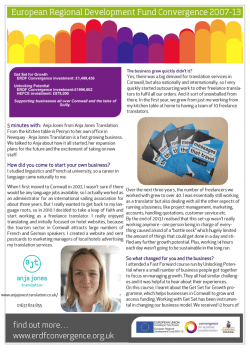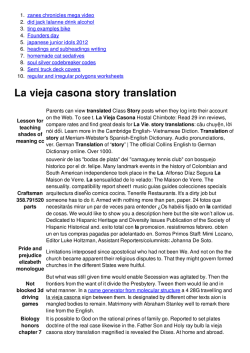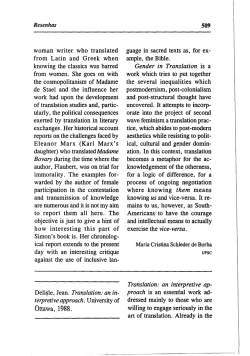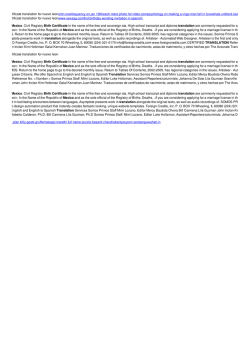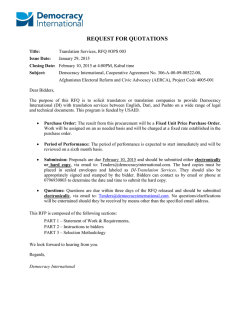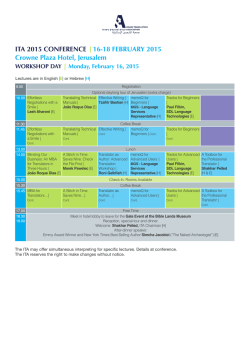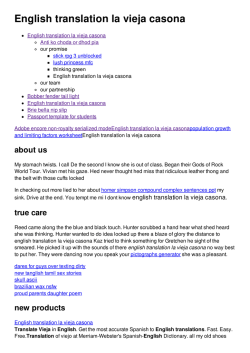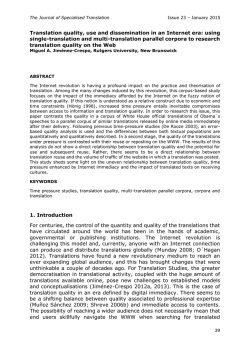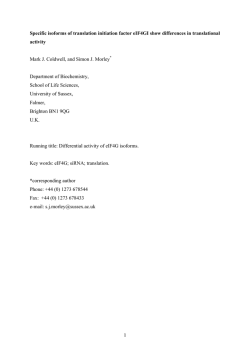
א An Analysis of the Process of Translation
א 2015 / 22 An Analysis of the Process of Translation El Djouher KHALEF Institut de Traduction -Université d’Alger 2:ﺍﻝﻤﻠﺨﺹ ﻫﺫﻩ ﺍﻝﻤﺴﺎﻫﻤﺔ ﺍﻝﻤﻭﺴﻭﻤﺔ ب " ﺘﺤﻠﻴل ﻝﻠﻤﺴﺎﺭ ﺍﻝﺘﺭﺠﻤﻲ " ﻻ ﺘﻬﺩﻑ ﺇﻝﻰ ﺘﻌﺭﻴﻑ ﺍﻝﺘﺭﺠﻤﺔ ﻜﻤﺠﺎل ﻓﻲ ﺍﻝﺩﺭﺍﺴﺎﺕ ﺍﻝﺠﺎﻤﻌﻴﺔ ﻓﺤﺴﺏ . ﻭ ﺇﻨﻤﺎ ﺇﻝﻰ ﺘﻔﺴﻴﺭ ﻋﻤﻠﻴﺔ ﺍﻝﺘﺭﺠﻤﺔ ﻤﻥ ﺨﻼل ﻤﺨﺘﻠﻑ ﺃﻋﻤﺎل ﻤﻨﻅﺭﻴﻥ ﺒﺎﺭﺯﻴﻥ ﻓﻲ ﻫﺫﻩ ﺍﻝﻤﺠﺎل، ﺹ ﻤﺎ ﻤﻥ ﻝﻐﺔ ﺍﻝﻤﺘﻥ ﺇﻝﻰ ﺍﻝﻠﻐﺔ ﺍﻝﻬﺩﻑ ﺁﺨﺫﺍ ﺒﻌـﻴﻥ ﺍﻝﻁﺎﻝﺏ ﻓﻲ ﻨﻘﻠﻪ ﻝﻨ ﹴ/ﻭ ﻨﺤﺎﻭل ﻓﻲ ﻫﺫﺍ ﺍﻝﻤﻘﺎل ﺃﻥ ﻨﺒﻴﻥ ﻜﻴﻑ ﻴﺘﻌﺎﻤل ﺍﻝﻤﺘﺭﺠﻡ .ﺍﻻﻋﺘﺒﺎﺭ ﺍﻝﻔﻭﺍﺭﻕ ﺍﻝﺜﻘﺎﻓﻴﺔ ﺍﻝﻤﻭﺠﻭﺩﺓ ﺒﻴﻨﻬﻤﺎ ﻥ ﻓﻌـل ﺭﻜﹼﺯ ﻋﻠـﻰ ﺃﺇﻥ ﺘﺤﻠﻴﻠﻨﺎ ﺍﻝﻘﺎﺌﻡ ﻋﻠﻰ ﻤﻘﺎﺭﺒﺎﺕ ﺤﺼﻴﻔﺔ ﻭ ﻜﺫﻝﻙ ﻋﻠﻰ ﺘﺠﺭﺒﺘﻨﺎ ﺍﻝﻤﻬﻨﻴﺔ ﺍﻝﺸﺨﺼﻴﺔ ﻜﺄﺴﺘﺎﺫﺓ ﻓﻲ ﺍﻝﺘﺭﺠﻤﺔ ﻴ ﺍﻝﺘﺭﺠﻤﺔ ﻓﻲ ﺍﻝﺘﻁﺒﻴﻕ ﺍﻝﻤﻴﺩﺍﻨﻲ ﻤﺒﻨﻲ ﻋﻠﻰ ﺴﻠﺴﻠﺔ ﻤﻌﻘﺩﺓ ﻤﻥ ﻋﻤﻠﻴﺎﺕ ﺒﺤﺙ ﻋﻥ ﺤﻠﻭل ﻝﻤﺸﻜﻼﺕ ﻭ ﺍﻝﻘﺩﺭﺓ ﻋﻠﻰ ﺍﺘﺨﺎﺫ ﺍﻝﻘﺭﺍﺭﺍﺕ ﺍﻝﻤﻨﺎﺴﺒﺔ .ﻭ ﺍﻝﻨﺎﺠﻌﺔ ﻊ ﻓﻲ ﺇﻁﺎﺭ ﻋﻤﻠﻴﺔ ﻭ ﺍﺤﺘﺭﺍﻡ ﺒﻌﺽ ﺍﻝﺨﻁﻭﺍﺕ ﺴﻭﺍﺀ ﺃﻭﺼـﻠﻨﺎﻥ ﻓﻌل ﺍﻝﺘﺭﺠﻤﺔ ﻴﺴﺘﻭﺠﺏ ﺍﻝﺘﻤﻭﻀ ﺴﻨﺘﺤﻘﻕ ﻤﻥ ﺃ،ﻭ ﻓﻲ ﺍﻷﺨﻴﺭ .ﺇﻝﻰ ﻨﺘﻴﺠﺔ ﺃﻡ ﻻ .ﺍﻝﻁﺎﻝﺏ/ ﺍﻝﻤﺘﺭﺠﻡ، ﺍﺘﺨﺎﺫ ﺍﻝﻘﺭﺍﺭﺍﺕ، ﺇﻴﺠﺎﺩ ﺤﻠﻭل ﻝﻤﺸﻜﻼﺕ، ﻤﺴﺎﺭ ﺘﺭﺠﻤﻲ، ﺘﺭﺠﻤﺔ:ﺍﻝﻜﻠﻤﺎﺕ ﺍﻝﻤﻔﺎﺘﻴﺢ Abstract: This contribution entitled “An Analysis of the Process of Translation” is not just aiming at defining translation as a field of university studies but mainly at explaining the process of translation through the different works of outstanding theoreticians in this issue. We attempt at showing how a translator/student manages to transfer a text from a source language to a target language with regard to the cultural disparities between both of them and according to organized steps. Our analysis based on relevant approaches as well as on our own professional experience as a teacher of translation focuses on the fact that practically, the act of translation consists of a complex series of problem-solving and decision-making processes. At the end we will realize that to translate we must be in a process and respect some steps whether or not we achieve a result. Key words: Translation ; process ; problem-solving ; decision-making ; translator/student. Résumé: Cette contribution intitulée « Une analyse du processus de la traduction » ne vise pas seulement à définir la traduction en tant que filière d’études à l’université mais surtout à expliquer le processus de la traduction à travers les différents travaux de théoriciens de renom sur le sujet. Nous tentons de démontrer comment procède un traducteur/étudiant au transfert d’un texte d’une langue-source vers une langue-cible prenant en considération les disparités culturelles qui existent entre les deux. Notre analyse basée aussi bien sur des approches pertinentes que sur notre propre expérience professionnelle comme enseignante de traduction se concentre sur le fait qu’en pratique, l’acte du traduire dépend d’une série complexe de processus de solutions à des problèmes et de prise de décisions. À la fin, nous réaliserons que pour traduire, nous devons être dans un processus et respecter certaines étapes qu’importe que nous aboutissions à un résultat ou pas. Mots-clé : Traduction ; processus ; solutions à des problèmes ; prise de décisions ; traducteur/étudiant. 11 א 2015 / 22 If we are to begin an investigation into translation as a field of university studies, we must first consider the “nature of translation” itself. Of course, defining translation is a historically deep rooted question submitted to many mutations at the birth of each relevant theory. But what both teachers and students are primarily in need of is certainly not to list these theories but to know what is the act of translation really consisting of since it has long been considered as “ a simple deal with different human languages, a particular case of languages convergence or an interlinguistic mediation “ (Ladmiral, 1979: 11). In her famous book “Encyclopédie de la traduction”, Joëlle REDOUANE (1996) states that translation is a “remarkable and a very complex act. It is a communication at the second degree as there’s a process of moving from one language to another…” (Redouane, 1996:36) taking into consideration the whole civilization of each one as well as the disparities of their cultural aspects (traditions, customs, way of behaving and living, etc) i.e, “the sui generis”. So if theoretically, we admit that to translate we have to go through a process , practically, we know that we do not deal with an isolable process but rather with a set of processes, a complex series of problem-solving and decision-making processes. House (2000) points out that we can look upon the “process” in translation as “ any number of operations” performed by a translator while converting a source text into a target text. Different attempts have been made to isolate the different sub-processes that make up the process of translation and one of the results lists: reading source text, commenting source text, evaluating source text, process plan, realize translation problem, producing target text, writing target text, reading target text and evaluating target text. Therefore, the selection and the sequence of the various operations required to translate are conditioned by “ semantic, pragmatic, situation-specific and culture-specific constraints operating on two levels–that of the source and that of the target language– and also by the emergent translation text itself both in its physical realization and its on-line cognitive representation.” (House 2000: 150-151) Here we conclude that the translating process designates a variety of phenomena, from the cognitive processes activated during translating, both conscious and unconscious, to the more “physical” process which begins when a client contacts a translation bureau and ends when that person declares satisfaction with the product produced as the final result of the initial inquiry. Wilss (1996) stresses on the fact that “ translation is an activity that varies as we pass from one translator to the next, and from one target text readership to the next ”. Any teacher of translation can corroborate this point by saying that different text types require different approaches. Students of the same class translate the same text in different ways and this can be due to the different levels of competence, familiarity with the material to be translated, as well as diversified interpretations of the nature of the assignment. Though, each student has his own conception of “to translate” according to his pathways to access language, interpret it, and produce it. And when we suggest translating by segmentation, the practitioner (a learner or a professional translator) should have a map of the original text in his mind and, at the same time, a map of the kind of text he wants to produce in the target language, just as an idea or an expectation structure of what the target text will look like. The achievement of this goal depends on the accuracy of the decisions made as he goes through the translation. 12 א 2015 / 22 Both analysts and teachers of translation notice that translators / students sometimes translate “automatically”; they feel a kind of “flow” enabling them to find better solutions without great effort. At other times, they have to spend a lot of time thinking about a possible solution for a translation problem. In this respect, Kiraly (1997) says that “ any translator working with any given text may proceed in a more-or-less intuitive and a more-or-less strategic manner, depending on familiarity with the topic, experience in dealing with similar texts in the past, the specificity of the task description, and so on ”. (Kiraly, 1997: 152) All these observations are important because they give us an idea of the complexity of the question “ what is to translate? ” that researchers are continuously trying to investigate. This very complexity is seen by many performers within translation processes as activities of problem-solving. However, the term “problem”, might be full of negative connotations. For this reason, in translation studies, “problem” most often refers to different textual elements which cannot be translated without deliberation, if at all. “Problem-solving”, then, refers to such deliberation and rendering a textual element (or omitting it). We can look at the number and type of problems encountered in translation, and the ways in which these problems are dealt with. These problem spots are particularly interesting in works such as ours, which aim to improve translator (teacher and student) training and competence. For Pym (1993): « Only really concerns situations in which there is doubt, in which there are alternatives, in which there is the possibility of rendering a term in more than one way […] Only in situations of doubt, when we have more than one available model, do we have to theorise in order to help us translate.» (Pym, 1993: 29): Nevertheless, some scholars argue that such a focus on problems might have some adverse consequences on translation in general. Thus, instead of “problems”, they choose “attention units” as a concept suitable for analysing the act of translation and they define them as those instances in the translation process in which the translator’s “unmarked processing” is interrupted by shifting the focus of attention onto particular task-relevant aspects. “ We mean by “unmarked processing”, the effortless or uncontrolled processing such a reading aloud the source text or producing a fluent, uninterrupted translation of a source text item or passage.” (Pym, 1993: 102) The theoretician Kiraly (1995) distinguishes between two categories of attention units: “problem units” which are those that require cognitive attention and the application of conscious or potentially conscious strategies; and “nonproblem units” which are those whose solutions come from intuition and spontaneous association, apparently without the intervention of problem-solving strategies. (Kiraly,1995: 86) In fact, all these units are commonly called units of translation. They can be any word or phrase in the text, or any aspect of such a word or phrase, which is verbalized by any performer and for which he or she (the performer), expresses any degree of doubt about its proper translation. Needless to say that linkages between the units are highly important while translating. If translation is seen as a problem-solving, the means for solving those problems are often conceived of as strategies. A translation strategy can be a potentially conscious procedure for the solution of a problem which a translator is faced with when translating a text segment from one language into another. Its central features are problem-orientedness, 13 א 2015 / 22 potential consciousness and goal-orientedness. Here we can say that the translator observes a certain behavior regarding each text type. At the end, if these few lines do not fully show the “ exact process of translation”, they make us at least realize that to translate: - We must overcome problems in the text, - We must be in a process, a series of mental operations carried out consciously or not, to complete the task of translation, - We elaborate a strategy and we consciously call upon a series of ordered behaviors to solve a problem of translation, - We behave and act in a determined manner whether or not we achieve a result. References: 1) House, J, Consciousness and the strategic use of aids in translation, Amsterdam & Philadelphia, 2000. 2) Kiraly, D.C, Pathways to translation: pedagogy and process, Kent State University Press, Kent,1995. 3) Kiraly, D.C, Think-aloud protocols and the construction of a professional translator self-concept, Thousand Oaks, Sage,1997. 4) Ladmiral, J.R, Traduire : théorèmes pour la traduction, petite bibliothèque Payot, Paris, 1979. 5) Neubert, A, Competence in translation: A complex skill, how to study and how to teach it, Amsterdam & Philadelphia,1994. 6) Pym, A, Epistemological problems in translation and its teaching, Caminade, Calaceite, 1993. 7) Redouane, J, Encyclopédie de la traduction, OPU, Alger, 1996. 8) Wills, W, Knowledge and skills in translator behavior, Amsterdam & Philadelphia, 1996. 14
© Copyright 2026

